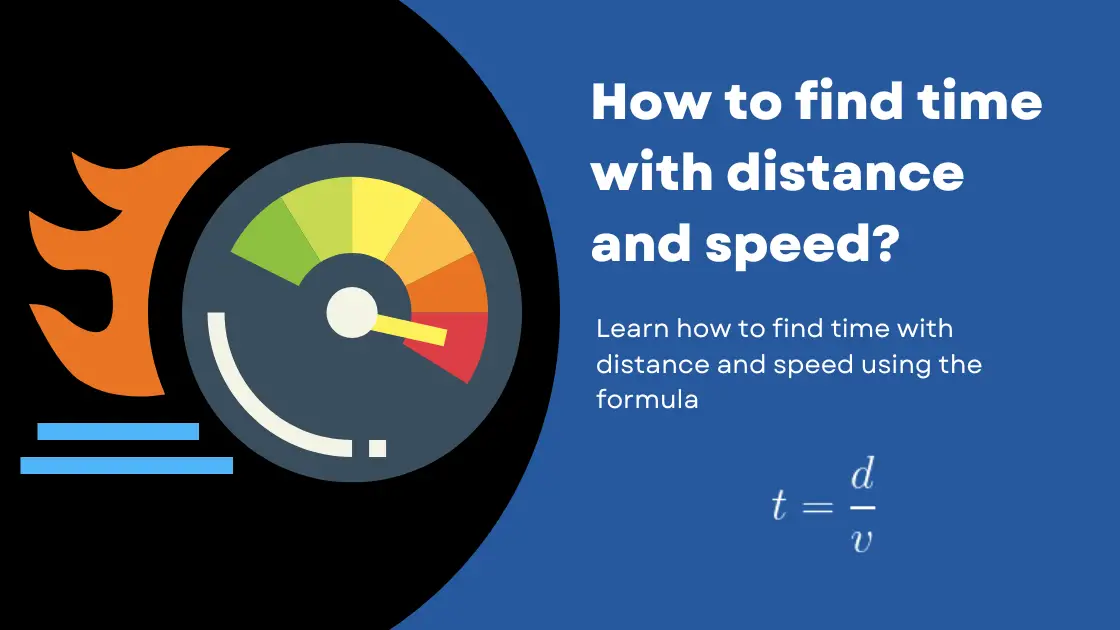In this article, we will learn how to find time with distance and speed. In physics, the relationship between time, distance, and speed is fundamental to understanding motion.
The formula linking these three variables allows us to calculate one when the other two are known. This topic is especially relevant to kinematics, the branch of physics that deals with the study of motion.
Definitions and Basic Concepts
First, let us review the definitions and fundamental concepts that are essential for addressing problems that require determining time when you are given distance and speed.
Speed
Speed is defined as the rate at which an object covers a distance. It is a scalar quantity and is given by the formula:
\[
\text{Speed} = \frac{\text{Distance}}{\text{Time}}
\]
Mathematically, it can be represented as \( v = \frac{d}{t} \).
Visit our page on What is speed in physics? to learn more about this concept.
Distance
Distance is the length of the path taken by an object in motion. It is a scalar quantity measured in units like meters, kilometers, or miles.
Time
Time is the duration for which an object is in motion. It is a scalar quantity measured in seconds (s), minutes (min), or hours (h).
The Time-Speed-Distance Formula
To find the time when distance and speed are known, we rearrange the speed formula to solve for time \( t \):
\[
t = \frac{d}{v}
\]
Here, \( t \) is the time, \( d \) is the distance, and \( v \) is the speed.
How to find time with distance and speed
Now that we’ve gone over the basic ideas and formula needed to find the time when distance and speed are known, let’s look at an example of how to find time with distance and speed.
Example
Suppose an object travels a distance of 300 meters at a constant speed of 25 m/s. To find the time taken by the object to cover this distance, we can use the formula:
\[
t = \frac{300 \, \text{m}}{25 \, \text{m/s}} = 12 \, \text{s}
\]
The object will take 12 seconds to cover a distance of 300 meters.
Questions and Answers
Can we use this formula for variable speeds?
No, the formula \( t = \frac{d}{v} \) is applicable only when the speed is constant. For variable speeds, you would have to use calculus-based methods or refer to the specific equation of motion. (see What is instantaneous speed?)
How does this concept relate to velocity?
Speed is a scalar, while velocity is a vector. The formula for time remains similar (\( t = \frac{d}{v} \)) if you use the magnitude of the velocity vector.
What is the difference between speed and velocity?
Speed is a scalar quantity that only indicates how fast an object is moving. Velocity is a vector that specifies both the speed and direction of motion.
Can time be negative in physics?
Time is generally considered a scalar quantity that cannot be negative in classical physics. However, in theoretical scenarios involving advanced topics like time travel or specific solutions to equations in General Relativity, negative time can sometimes be discussed.
How does acceleration affect time calculations?
When acceleration is involved, the formula \( t = \frac{d}{v} \) is not applicable. Instead, you would use kinematic equations that account for acceleration.
Further Reading
- What is Distance and displacement in physics?
- Rest and Motion in Physics
- What is instantaneous speed?


